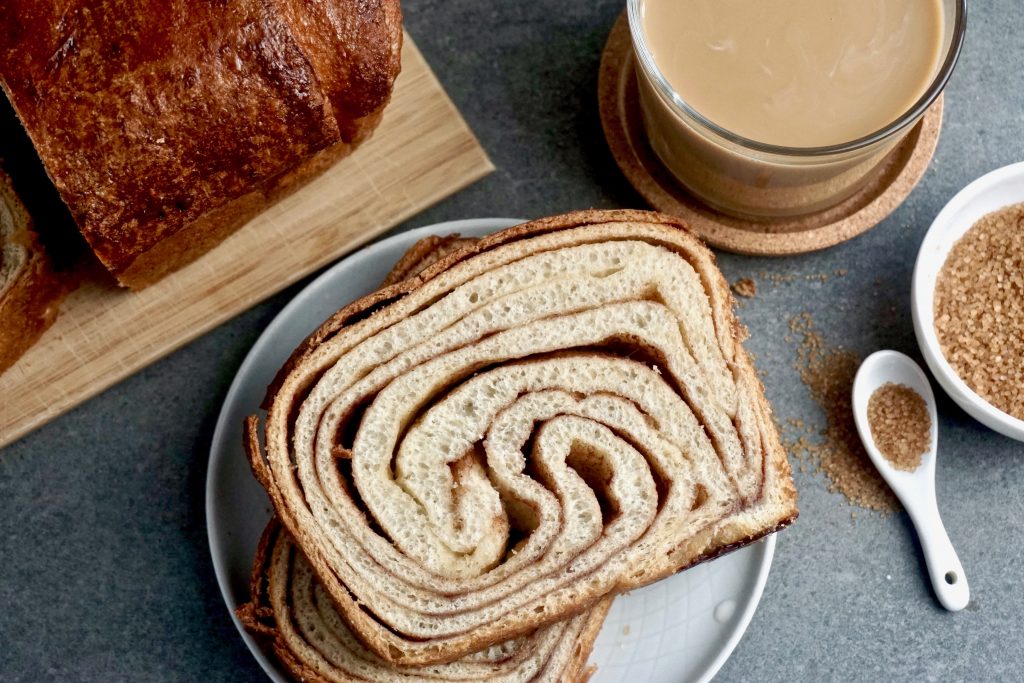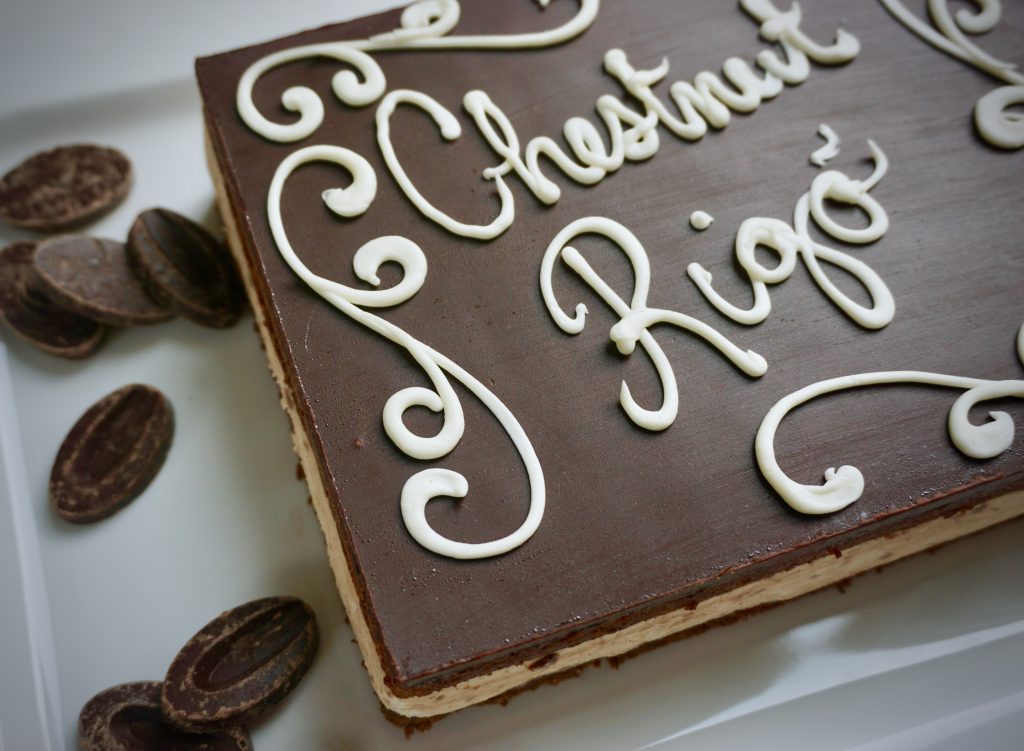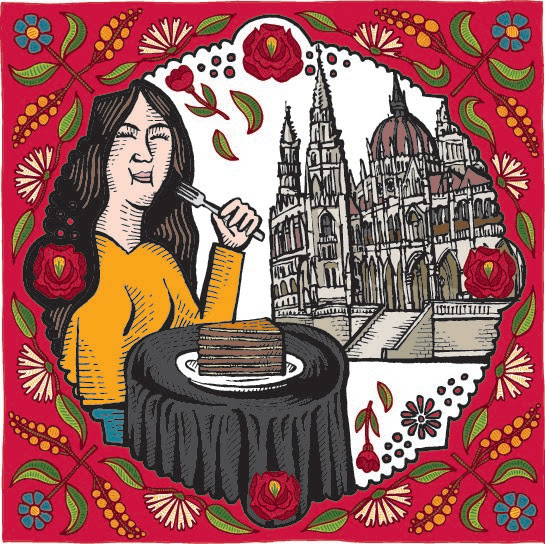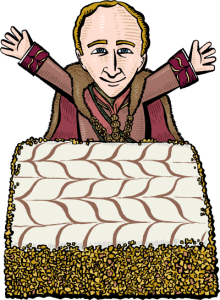As artisan bakers, we relish the seemingly infinite opportunity to keep learning and look to the world’s great cuisines and baking traditions for creative inspiration and edification.
The foodways of Hungary have been a culinary focus of ours now for a decade and for good reason. The country’s cuisine, shaped by over a thousand years of European history and myriad cultural influences, is incredibly rich, complex, and diverse. From the regional cheeses, the incredible wines, thoughtfully cured meats, and hearty soups and stews, to the incredible pastries, and elegant multi-layered tortas, Hungary has it all. Since 2011, it’s been a mission of ours to put together a broad selection of Hungarian baked goods. With several trips to Hungary and some eight years of training, testing, baking, tasting, talking, and teaching under our belts, we’re well on our way.
While we still have much more to study and learn, we’ve put together a wide range of incredibly delicious—and beautiful—sweet and savory breads and pastries, all true to Hungarian tradition.

Hungarian Cultural Influences
One aspect of Hungarian food we find so compelling, apart from its long, storied history, is its seamless absorption of an array of diverse cultural influences. The most prominent of these have been the Magyars (the ethnic founders of Hungary, beginning in 800 AD, and the creators of gulyás [goulash]), the Ottoman Turks (Hungary’s rulers from 1541 to 1699), and the Hapsburgs of Austria (the ruling dynasty in Hungary from ca. 1683 to 1867). Communist rule after World War II also left its mark on Hungarian foodways by destroying many local traditions and nationalizing elements of food production.
Over the centuries, the cuisine has evolved not just through invasion but also through invitation. At different times, Hungarian nobility invited both French and Italian court chefs to their own kitchens, creating an interesting meld of flavors, dishes, and techniques. At the turn of the 19th-20th century, Hungary enjoyed a thriving coffeehouse culture of delicious, fancy tortes and great coffee. Philosophers, writers, artists, musicians, and politicians gathered in coffeehouses to share ideas and camaraderie while eating cake! In Budapest alone, there were some 500 such establishments scattered throughout the city. Although time and wars had swept most of them away by the mid 20th century, several classic coffeehouses in Budapest have been restored in recent years trying to revive the dazzling coffee house culture characteristic of the turn of the 19th-20th century.

Connection to Jewish Traditions
Another facet of Hungarian food that piques our culinary interest is its strong connection to Eastern European Jewish history and cooking and, more particularly, to the traditional Ashkenazi Jewish food that is at the heart of Zingerman’s own culinary roots. Hungary had a large Jewish population prior to World War II, which was decimated in the final months of the war and suppressed during communism. Yet since the 1990s, there’s been a renaissance of Jewish life and cooking in Budapest. The city is now home to a thriving Jewish community, the population of which is the largest in Eastern Europe.
To learn about Hungarian food, firsthand, we traveled to Hungary and Transylvania on several research trips between 2011 and 2015. During our visits, we tasted and ate widely and also trained with local chefs, bakers, and home cooks, who shared with us not only their traditional Hungarian recipes and but also the time-honored techniques to create them. We also learned from and befriended our Hungarian neighbors in Washtenaw County and in greater Detroit. Since then, we’ve been tapping into Hungary’s culinary roots, developing for you an enticing selection of baked goods, including incredible breads, morning pastries, and elegant coffeehouse desserts and tortes.

7 Reasons We Love Hungarian Food
It Tastes Delicious
We fell in love with it first hand on our many trips to Hungary. The proof is in the eating! Gulyás, cabbage, goose fat strudel, stuffed cabbage, Lecso, pickles of all sorts, korozott, foie gras, lángos, krémes, dobos torta…delicious!
 Practice Makes Perfect
Practice Makes Perfect
Hungarian cuisine is more than 1000 years old! It has incredible depth and richness starting with the Magyars themselves, the inventors of gulyás. It includes flavors and methods from Ottomans, French, Italians, and Austrians! Any food tradition that’s persisted and evolved for 1,000 years is worth knowing about.
We’re Connecting With Our Hungarian Customers
Food can be an incredibly positive community builder. Many of our guests are now telling us about their Hungarian ancestry and bringing family members and friends to our shop (or to learn in our BAKE! classes) so that they can enjoy a taste of home. We love making food, but it is even more meaningful when it brings so much joy, appreciation, and connection.
It Connects Us with Zingerman’s Jewish Roots
Studying Hungarian food has helped us learn even more about Ashkenazi Jewish cooking. Many Jewish dishes are fully integrated and regularly served in the daily Hungarian repertoire and the largest Jewish community in Eastern Europe is thriving (and cooking) in Budapest today.
 It’s Abundant and Full of Variety
It’s Abundant and Full of Variety
There is a seemingly endless number of great pastries, cakes, breads, and soups for us to explore. There is both a rich tradition of home cooking and a highly developed professional cuisine. Regional specialties abound and holiday food traditions are practiced. It will take us years to really learn this cuisine and fully share it with you.
We Enjoy Educating
We’re very excited to introduce Hungarian foods to a new audience. Many of us know nothing about Hungary, let alone its cuisine, and the reception has been interest and enthusiasm.
Hungarian Words are Fun
We delight in learning to say and spell them. Rétes! Krémes! Rigó Jancsi! Stop in and ask for help with the pronunciations and a taste of our Hungarian foods!
February is Hungarian Month
at the Bakehouse!
We’re baking up even more of our favorite Hungarian treats this month:
Rigó Jancsi Torta with chestnut cream (pronounced “ree-go yan-CHEE”)  – Available every day
– Available every day
Dobos Torta – Cake of the month. Available every day
Mézes Krémes Torta (Hungarian Honey Cake) – Available every day
Krémes (pronounced “krem-esh”) – Available every Friday and Saturday
Potato Bacon Rétes & Indian Rétes – available every day
Dill Pogácsa (pronounced, “poh-gotcha”) – Available every Saturday and Sunday
Flodni (fluden in Yiddish) – Available every day
Almond Kifli – Available every day
Somodi Kalács (pronounced, “sho-MO-dee-ka-loch”) – Two special bakes: 2/12 & 2/13 and 2/26 & 2/27
Hungry for more Hungary?
- Read about some of our favorite Hungarian foods:
- Check out one of our virtual Hungarian baking or cooking classes:
- Join the Zingerman’s Food Tours trip to Hungary this fall: September 5-15, 2021
- Stop in the Bakeshop at the Bakehouse and ask for a taste of our Hungarian foods.


